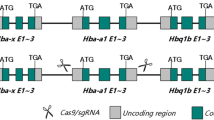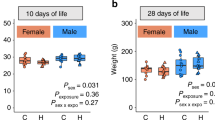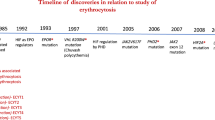Abstract
Extract: A system for the isolation and functional evaluation of fetal liver erythroblasts is described. Isolated erythroblasts were pre-pared from 14-day embryonic avian livers and incubated at various oxygen tensions (0, 5, 12, and 95%). The concentration of ATP in erythroblasts remained constant for at least 4 hr at 37°, but was rapidly reduced by incubation in nitrogen. Protein synthesis as measured by L-[14C]leucine incorporation into cell protein occurred at a linear rate in 5%, 12%, and 95% oxygen, whereas little protein synthesis occurred at 0% oxygen. The effect of hypoxia on the type of hemoglobin synthesized was studied in this system by isolating the hemoglobin A, hemoglobin D, and hemoglobin H fractions and determining the incorporation of L-[14C]leucine. The major fraction, hemoglobin A, contained most of the radioactivity; smaller amounts were present in hemoglobin D and hemoglobin H, respectively. The relative proportion of each hemoglobin synthesized was not altered by oxygen from 5% to 95%. These results argue against a direct effect of oxygen on the type of hemoglobin synthesized at this stage of development.
Speculation: Early in fetal development nonerythropoietin mechanisms for the regulation of erythropoiesis may exist. The hypoxic stimulus to erythropoiesis is mediated through erythropoietin in definitive erythroblasts, but may have a direct effect in primitive erythroblasts.
Similar content being viewed by others
Log in or create a free account to read this content
Gain free access to this article, as well as selected content from this journal and more on nature.com
or
Author information
Authors and Affiliations
Rights and permissions
About this article
Cite this article
Schwartz, A., Schwartz, R. & Schwartz, H. Effect of Hypoxia on Erythroblasts from Avian Fetal Liver: Adenosine Triphosphate Levels and Hemoglobin Synthesis. Pediatr Res 10, 796–801 (1976). https://doi.org/10.1203/00006450-197609000-00007
Issue date:
DOI: https://doi.org/10.1203/00006450-197609000-00007



